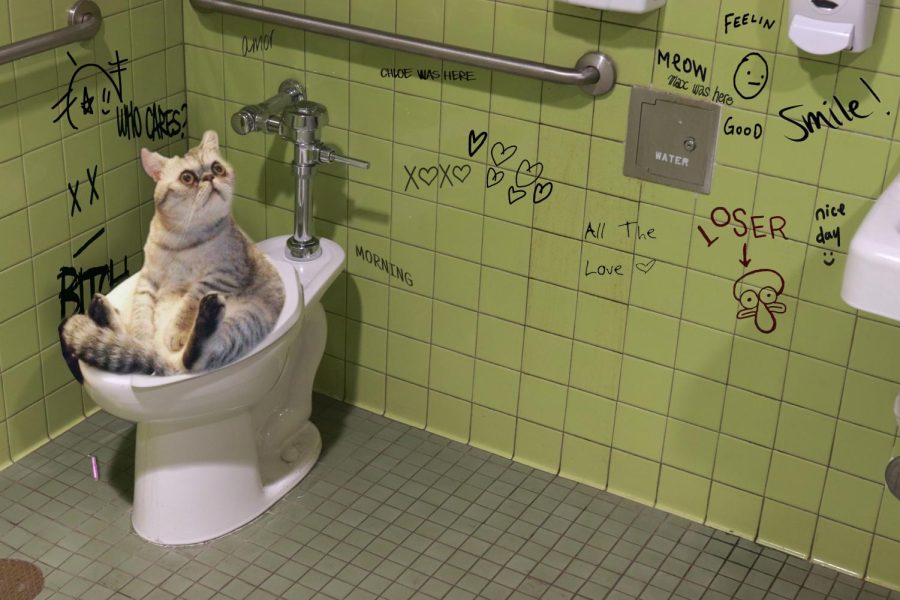Avoid Clogs and Damage: Don't Flush Cat Poop Down Your Toilet - Professional Recommendations
Avoid Clogs and Damage: Don't Flush Cat Poop Down Your Toilet - Professional Recommendations
Blog Article
Just how do you actually feel about Don’t flush cat feces down the toilet?
Introduction
As pet cat owners, it's essential to bear in mind how we throw away our feline pals' waste. While it might seem practical to flush feline poop down the commode, this method can have destructive repercussions for both the setting and human health.
Ecological Impact
Flushing feline poop presents harmful microorganisms and bloodsuckers into the water, positioning a significant threat to water ecosystems. These pollutants can negatively affect aquatic life and compromise water high quality.
Health Risks
In addition to ecological concerns, flushing feline waste can also position wellness risks to people. Pet cat feces might contain Toxoplasma gondii, a bloodsucker that can cause toxoplasmosis-- a potentially severe disease, especially for expectant women and individuals with damaged immune systems.
Alternatives to Flushing
Thankfully, there are much safer and extra liable ways to throw away pet cat poop. Consider the following options:
1. Scoop and Dispose in Trash
One of the most usual approach of getting rid of pet cat poop is to scoop it right into a biodegradable bag and throw it in the garbage. Make sure to use a devoted trash scoop and get rid of the waste promptly.
2. Usage Biodegradable Litter
Opt for naturally degradable feline clutter made from materials such as corn or wheat. These litters are environmentally friendly and can be safely disposed of in the trash.
3. Bury in the Yard
If you have a backyard, think about hiding pet cat waste in an assigned area far from veggie yards and water sources. Make sure to dig deep adequate to avoid contamination of groundwater.
4. Mount a Pet Waste Disposal System
Buy an animal waste disposal system particularly designed for pet cat waste. These systems make use of enzymes to break down the waste, minimizing smell and ecological influence.
Conclusion
Accountable family pet possession expands beyond giving food and sanctuary-- it also includes appropriate waste management. By avoiding purging feline poop down the toilet and opting for alternate disposal methods, we can reduce our environmental impact and safeguard human health.
Why Can’t I Flush Cat Poop?
It Spreads a Parasite
Cats are frequently infected with a parasite called toxoplasma gondii. The parasite causes an infection called toxoplasmosis. It is usually harmless to cats. The parasite only uses cat poop as a host for its eggs. Otherwise, the cat’s immune system usually keeps the infection at low enough levels to maintain its own health. But it does not stop the develop of eggs. These eggs are tiny and surprisingly tough. They may survive for a year before they begin to grow. But that’s the problem.
Our wastewater system is not designed to deal with toxoplasmosis eggs. Instead, most eggs will flush from your toilet into sewers and wastewater management plants. After the sewage is treated for many other harmful things in it, it is typically released into local rivers, lakes, or oceans. Here, the toxoplasmosis eggs can find new hosts, including starfish, crabs, otters, and many other wildlife. For many, this is a significant risk to their health. Toxoplasmosis can also end up infecting water sources that are important for agriculture, which means our deer, pigs, and sheep can get infected too.
Is There Risk to Humans?
There can be a risk to human life from flushing cat poop down the toilet. If you do so, the parasites from your cat’s poop can end up in shellfish, game animals, or livestock. If this meat is then served raw or undercooked, the people who eat it can get sick.
In fact, according to the CDC, 40 million people in the United States are infected with toxoplasma gondii. They get it from exposure to infected seafood, or from some kind of cat poop contamination, like drinking from a stream that is contaminated or touching anything that has come into contact with cat poop. That includes just cleaning a cat litter box.
Most people who get infected with these parasites will not develop any symptoms. However, for pregnant women or for those with compromised immune systems, the parasite can cause severe health problems.
How to Handle Cat Poop
The best way to handle cat poop is actually to clean the box more often. The eggs that the parasite sheds will not become active until one to five days after the cat poops. That means that if you clean daily, you’re much less likely to come into direct contact with infectious eggs.
That said, always dispose of cat poop in the garbage and not down the toilet. Wash your hands before and after you clean the litter box, and bring the bag of poop right outside to your garbage bins.
https://trenchlesssolutionsusa.com/why-cant-i-flush-cat-poop/

Hopefully you enjoyed reading our part about Can You Flush Cat Poop Down The Toilet?. Thanks a ton for spending some time to browse our article post. For those who enjoyed our article kindly make sure you remember to share it. Thank you for your time spent reading it.
Visit Link Report this page